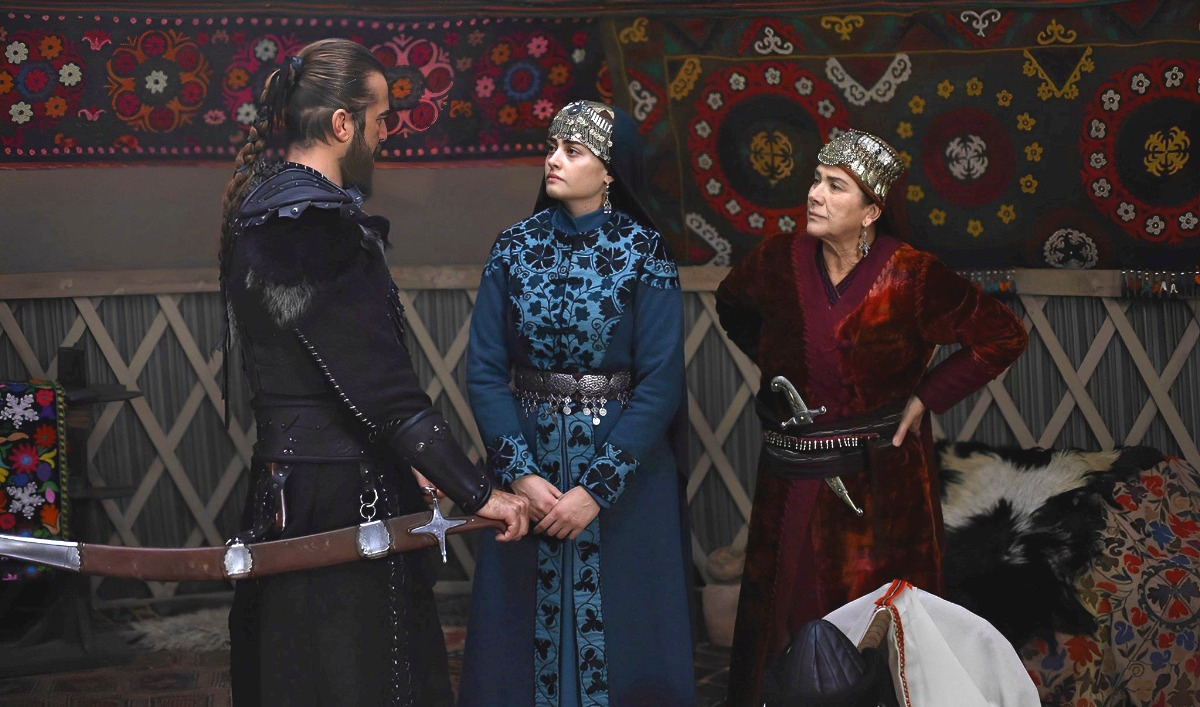[ad_1]
With the internet offering people the superhighway of information and knowledge, youth living in the pre-digital periphery are getting virtually cosmopolitan by watching their choice of global content, reports Babra Wani

In 2014, Saba’s cousin showed her a Korean drama Boys Over Flowers. She enjoyed it to the last second of the episode. Owing to no access to the internet back home, she could watch the series. She lacked a laptop and a smartphone. Time passed normally, but Saba could not forget that episode.
“Somewhere in the back of my mind, I was hooked on that drama,” Saba said, almost a decade later. “I wanted to watch every episode of it.”
When Covid19 confined people to the four walls of their homes, Saba suddenly became a time-surplus person, who now was fortunate enough to have high-speed internet and a personal laptop too.
Having nothing better to do, she logged in to her laptop and started streaming the Korean drama online.
“The content is very addictive”, said Saba as she recalled herself binge-watching the entire series, episode after episode. Currently pursuing her master’s at the University of Kashmir, Saba recalled how she used to recharge add-ons internet packs for extra data to watch dramas. Watching the series that is credited for creating the Korean Wavein Asia triggered an insatiable desire in Saba to keep exploring and watching other Korean dramas and web series. “In a period of a few months, I have completed more than a hundred Korean dramas, movies, and web series.”
Globalised Content
For decades, the only source of entertainment in Kashmir used to be the state-run Doordrashan. Generations grew up consuming the hilarious content of Nazir Joshs and Shaadi Lal Kouls. They have a fervent following in the senior generation to this date.
As the decades progressed, the Joshs and Kouls were slowly replaced by the Western star casts. Millennials began dictating the production and consumption of content. Even if the language barrier was there, subtitles provided an easy route to understanding different linguistic realms. Characters like The Professor from the popular Spanish series, The Money Heist and Player 456 from The Squid Game found global acceptance. They became symbols of globalization.

Rakshanda Altaf, an agriculture student, is also an avid fan of Korean content. Off late, she is enchanted with Japanese and Chinese dramas.
“I actually began watching Korean dramas during Covid19 lockdown and then I shifted to Japanese and Chinese content,” she said, “I love how their dramas and the content is concise and you know maximum a series will last is for some 50 episodes, unlike Indian dramas which are spread across generations.”
For Mahek, a student at the University of Kashmir, the introduction to the world of K-dramas was through her peers. In 2017, when she was in school, she started watching Cinderella and the Four Knights – a drama with four handsome leads. She said her friends found themselves attracted to the series.
Downloading the series in her pen drive from her friend’s laptop, marked the new normality. An avid consumer of Indian soap operas, Mahek changed. The Korean content lacked a match with what she was consuming earlier. “I gave up on watching Indian serials.” For Mahek, it was the storyline, the content and the cast of the series which attracted her interest. Slowly, she started watching Chinese and Thai content as well.
The Hallyu Craze
Not only that, Mahek also began downloading Korean language learning apps to learn the language and tried making Korean friends as well. “I have downloaded tons of apps to learn more about Korean culture. I know a few words as well, like oppa, which means older brother, or Saranghae. which means I love you. Every K-drama watcher will be familiar with these words,” Mahek said. For her and many other Hallyu fans the Korean culture, language and everything related to Korea looks intriguing and exciting.
For the unversed, Hallyu is a popular China-origin term used for the Korean wave, when in the 1990s people outside Korea first learned about Korean content. Then slowly it was in 2012 when Psy’s (a Korean singer) Gangnam Style became a worldwide hit and then with the emergence of BTS, which holds the title of the world’s biggest boy band and Blackpink, an all-girls group, the Korean entertainment industry became a worldwide phenomenon.
Not Just Korean
The profile of consumers of such content ranges from teenagers to adults in their late twenties and early thirties. Hafsoah Ahmed, who is currently pursuing her doctorate degree, started off by watching the famous American series, Friends. From there, she digressed towards anime.
“It was the quality and the quantity of the content that first attracted me towards the series. The acting, the direction, the presentation, everything is A1 in the international series,” Ahmed said. “I like how the information and the content of the message of the series are put across. How it is presented and addressed.”
Hafsoah thinks she is an introvert and not so “outdoorsy” so she just spent all her time watching these international series.
Dramas like Friends, The Big Bang Theory, Gray’s Anatomy became quite popular among Kashmir youth at the beginning of the year 2020. However, it was not just in 2020 back in 2019 as well when the internet was shut down in Kashmir, people especially youth relied on foreign series and movies to keep themselves entertained.
The Ertugrul Era
In 2020, the Turkish series Ertugrul became a massive hit among Kashmiris across all age groups. It is a period drama detailing the struggle of Turkish herdsmen to have their own state against the interests of the crusaders, Mongols and Seljuks. At one point in time, this series was the sole big factor behind the mass sale of hard drives and storage devices.

Soon, the Ertugrul’sKayiTribe-inspired skull caps were flooding the market. The fame of Ertugrul also resulted in an increase in the viewership of some other Turkish dramas and series. Kurulus Osman, a spin-off of the Ertugual series also saw an overwhelming response from the Kashmiri audiences. People still continue to watch the Ertugrul series. A Kayi tribe theme-based restaurant was also opened in one of the areas in Srinagar’s Shehr-e-Khas.
Perhaps the Turk entertainment sector barely knew the potential for their content in Urdu and Hindi speaking belt in South Asia. With Ertugrulcreating new milestones, now every Turkish drama has a must Urdu edition.
Pakistani Drama Fans
In Kashmir, Pakistani dramas always had a bigger audience. While the millennials comprise the majority of the audience for Korean, Chinese and other dramas, Pakistani dramas owing to the use of the Urdu language have a bigger demographic as their consumers. Pakistani dramas enjoy a lot of fondness and popularity amongst the population of Kashmir. For many people, watching family soap operas is one way of helping kids pick up Urdu speaking.
Shabnam, a woman in her mid-forties began watching Pakistani dramas and series in 2016 when her daughter got access to the internet and a mobile phone for the first time. “My daughter showed me a Pakistani movie and then we began watching a drama and then we saw another drama and then another and that is how we began consuming Pakistani series,” she said.
Earlier it used to be the state-owned TV in Islamabad to telecast the dramas. Now there are scores of channels and a lot of internet space that is consuming Pakistan content, especially the drama.
The popularity of Pakistani suits and clothing among Kashmiri women can be attributed to Pakistani shows. Several Kashmiris also pick Pakistani names of their favourite characters for their children.
The Psychology Behind
Why do Kashmiri people prefer watching foreign web or TV series over domestic serials? Wasim Kakroo, Consultant Clinical Psychologist at the Centre for Mental Health Services at Rambagh Srinagar said it has its own psychology.
“Foreign content can offer a sense of novelty and excitement that may be lacking in domestic serials. When young people are exposed to new and different cultures, they may feel a sense of intrigue and curiosity that motivates them to explore further. This desire for novelty and exploration is a fundamental human trait, and it can be particularly pronounced during adolescence when young people are seeking to establish their identity and place in the world,” Kakroo said
“Foreign content may provide a sense of escapism from their stresses. Since Kashmiri youth feel frustrated by the political turmoil and unemployment, they feel overwhelmed or stressed. Watching characters who live in different countries, speak different languages, and have different customs can transport viewers to a different world, allowing them to temporarily forget about their own problems.”
The OTT Factor
The rise of over-the-top (OTT) and streaming platforms like Netflix, Amazon Prime, Hotstar, Asiaflix, Viki Rakuten, and MX Player also made it completely easy for the distribution of worldwide content in Kashmir. Its popularity is an outcome of the high-speed internet. India has access to the cheapest internet prices in the world. This is a huge enabler.
An Allied Market Research report suggests the OTT industry was valued at US $ 97.43 billion in 2017 and is expected to reach US $ 332.52 billion by 2025.
The OTT platforms have a huge basket from SciFi to romantic comedies (romcom) to action to horror to period dramas. They are democratic as they cater to different needs of people and consumers regardless of gender, age, ethnicity and nationality.
The emergence of OTT has resulted in cultural exchange as audiences become more and more interested in foreign cultures. “Consuming content from across the world is not only passing time but also exposing one to different cultures and places around the world,” Hafsoah said. “The cultural exchanges and the globalization of media has also resulted in cultural homogenization and heterogenization.”
[ad_2]
#Globalised #Content
( With inputs from : kashmirlife.net )

